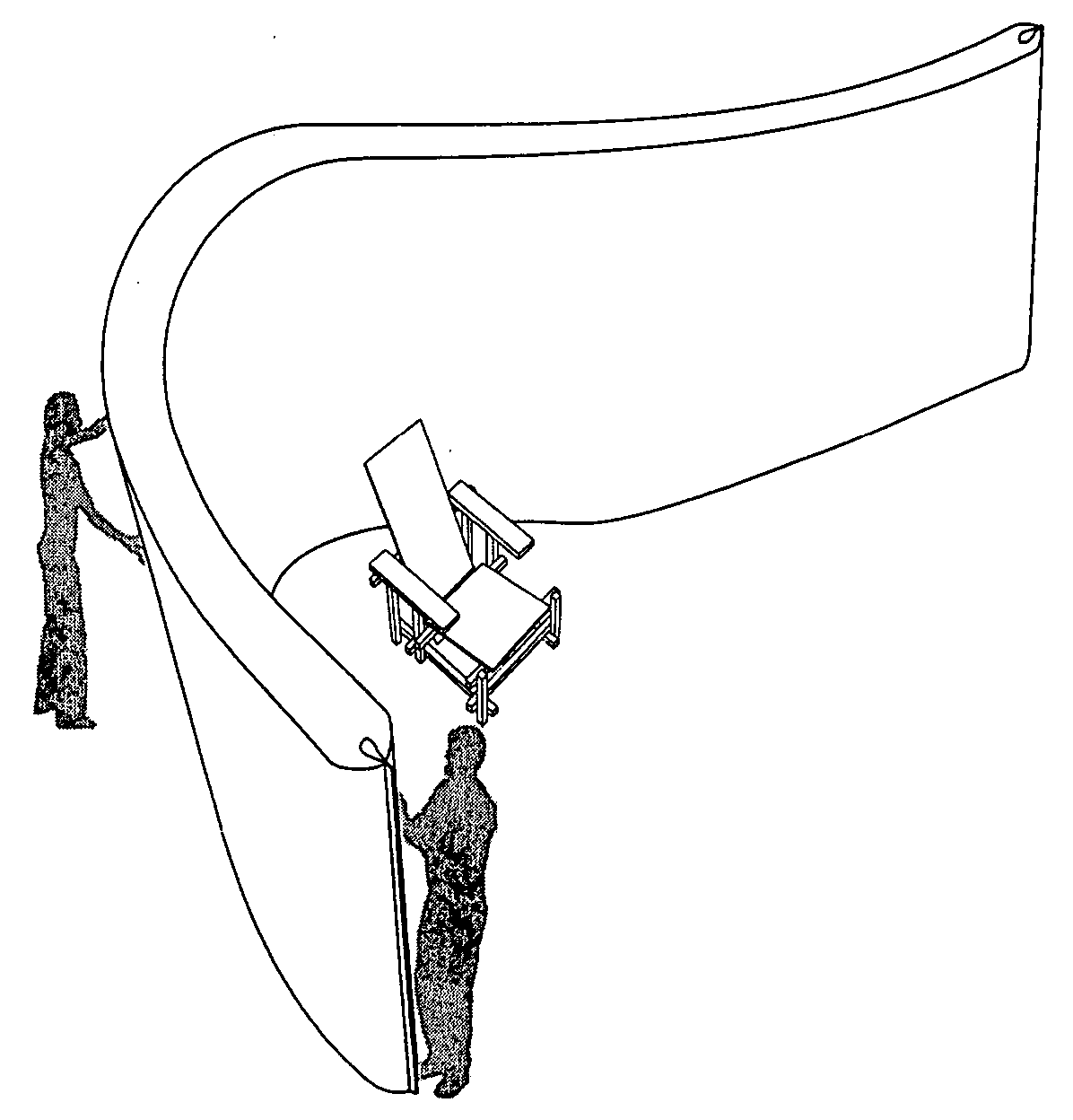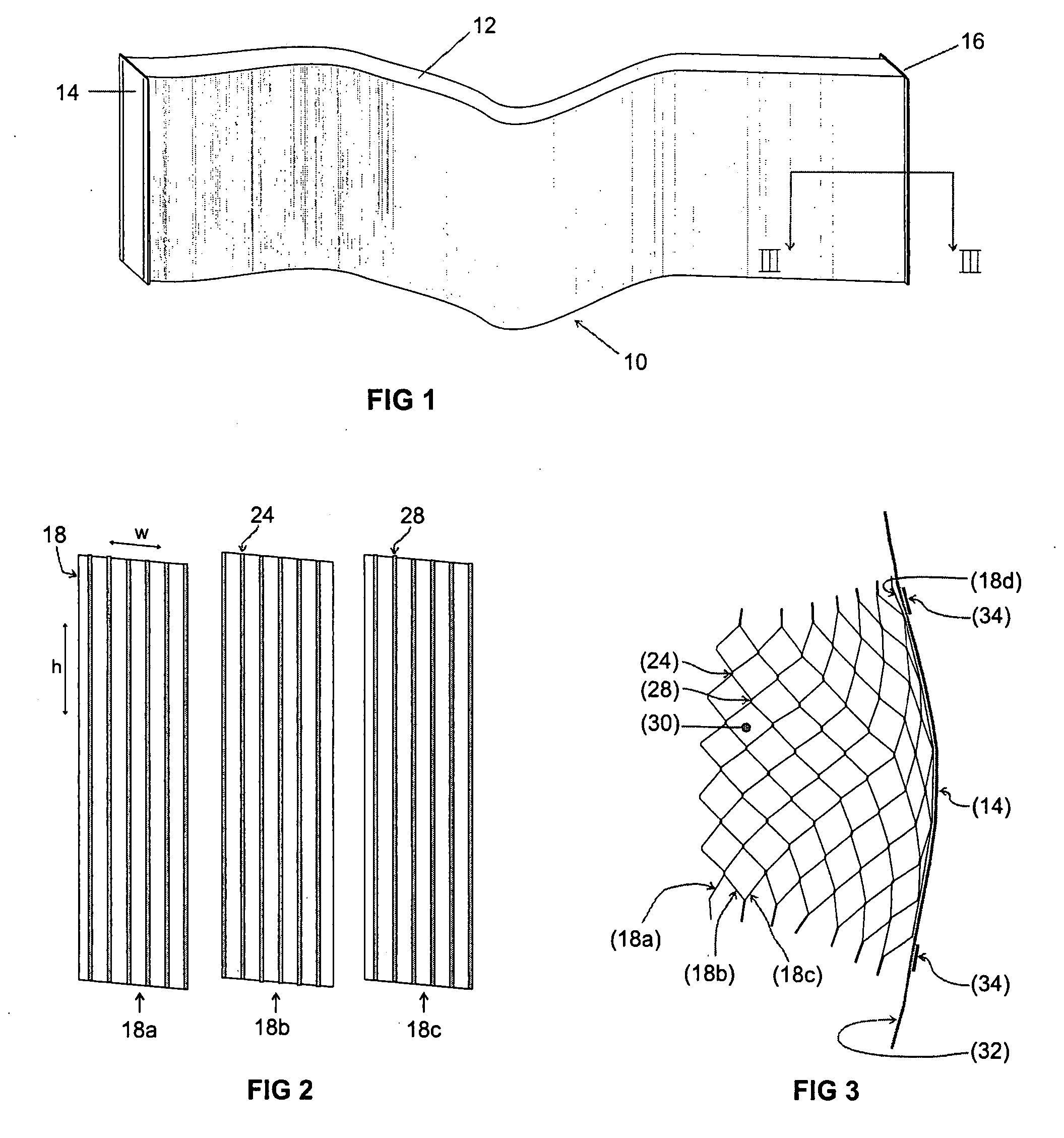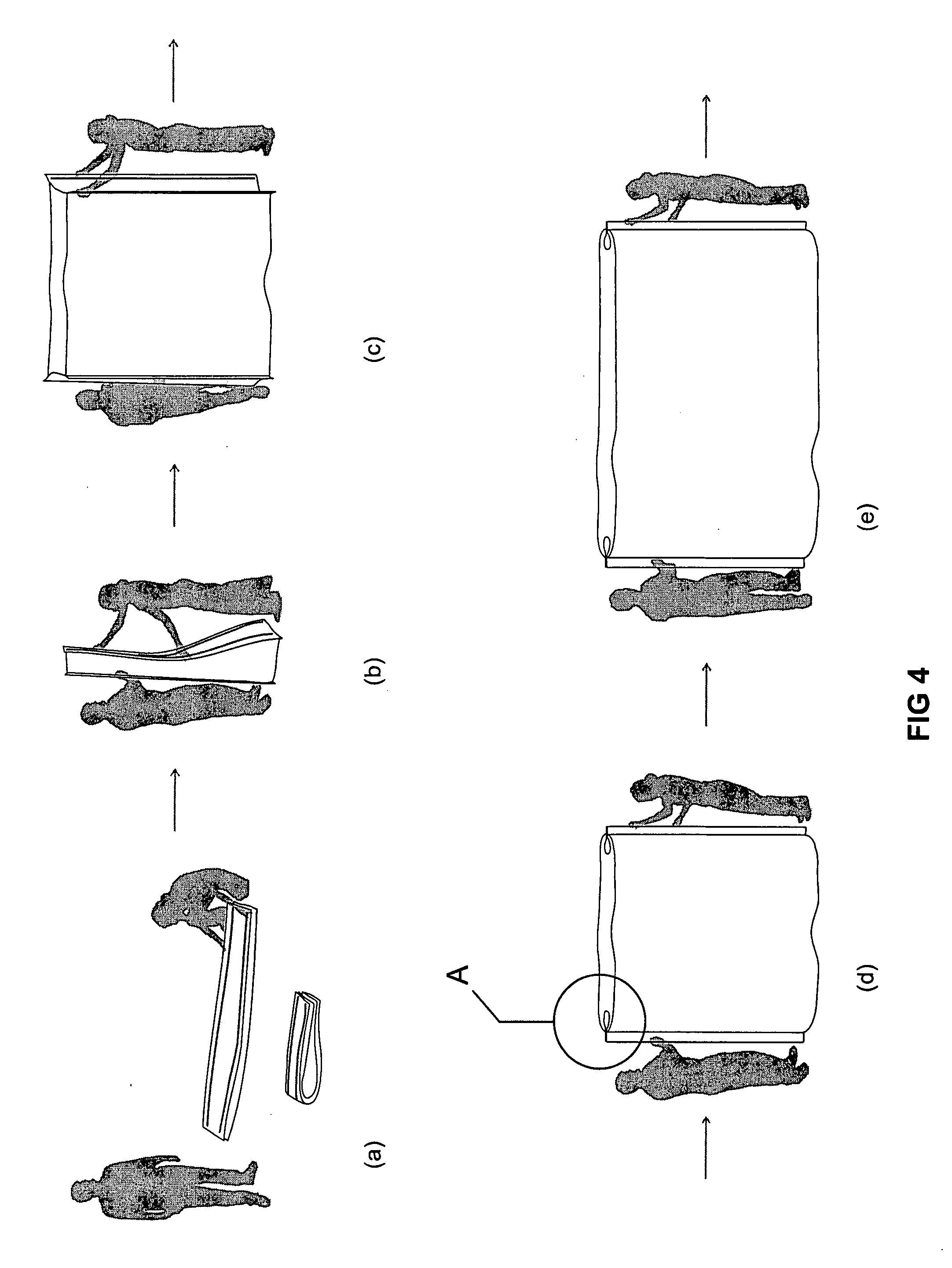Flexible furniture system
a furniture system and flexible technology, applied in the field of flexible furniture components, can solve the problems of limiting the extent to which they can be dynamically resized affecting so as to achieve the effect of expanding the cellular structure and extending the overall length of the articl
- Summary
- Abstract
- Description
- Claims
- Application Information
AI Technical Summary
Benefits of technology
Problems solved by technology
Method used
Image
Examples
Embodiment Construction
[0027] Referring therefore to FIG. 1, a partition 10 comprises a core 12 and a pair of supports 14, 16 at opposite ends of the core 12. As can best be seen from FIGS. 2 and 3, the core 12 is formed from a plurality of panels 18. The panels 18 each have a pair of oppositely-directed major faces 19, 20, and are formed from a flexible flaccid material. In the preferred embodiment, the material forming the panels 18 is standard white, flame retardant tissue paper, having a weight of approximately 13.5 lbs (500 sheets @ 24″×36″=13.5 lbs). Each panel has a major dimension or height h and a width w which may be adjusted to suit particular environments. Typically the height will be in the order of 1-2 metres but could range from 0.5-3 metres when used as a partition, or 0.1 metres to 0.5 metres when used as a seat. A seat height of 0.45 m has been found particularly beneficial. The width is typically in the order of 30 centimetres but could range from 10-100 centimetres. Adjacent panels 18 ...
PUM
 Login to View More
Login to View More Abstract
Description
Claims
Application Information
 Login to View More
Login to View More - R&D
- Intellectual Property
- Life Sciences
- Materials
- Tech Scout
- Unparalleled Data Quality
- Higher Quality Content
- 60% Fewer Hallucinations
Browse by: Latest US Patents, China's latest patents, Technical Efficacy Thesaurus, Application Domain, Technology Topic, Popular Technical Reports.
© 2025 PatSnap. All rights reserved.Legal|Privacy policy|Modern Slavery Act Transparency Statement|Sitemap|About US| Contact US: help@patsnap.com



